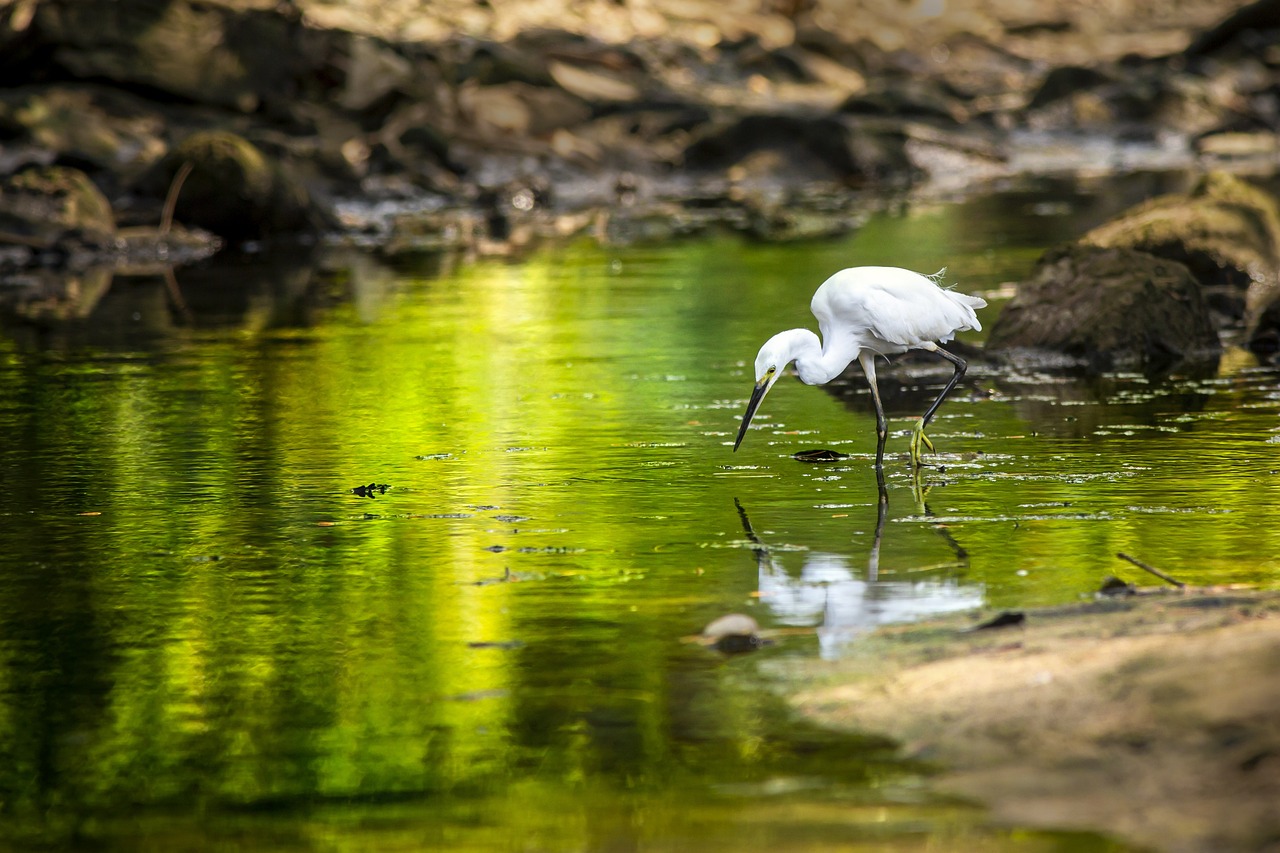The Little Egret (Egretta garzetta) is a small, graceful white heron known for its striking appearance and elegant hunting behavior. Here are some key details about this bird species:
Appearance
- Size: Little Egrets typically measure about 55-65 cm (22-26 inches) in length, with a wingspan of 88-106 cm (35-42 inches).
- Coloration: Adults are entirely white, with long, slender black legs and yellow feet. During the breeding season, they develop long, wispy plumes on their head, neck, and back.
- Bill: Their bill is long, slender, and black, which contrasts with their bright white plumage.
- Eyes: They have yellow eyes, which become more pronounced during the breeding season.
Habitat
- Range: Little Egrets have a wide distribution, found across parts of Europe, Africa, Asia, and Australia.
- Environment: They inhabit a variety of wetland habitats, including freshwater and saltwater marshes, rivers, lakes, ponds, mangroves, and coastal shores. They are often seen in shallow water, where they hunt for food.
Behavior
- Feeding: Little Egrets are skilled hunters, using a variety of techniques to catch their prey. They feed primarily on fish, but their diet also includes amphibians, crustaceans, insects, and other small aquatic animals. They may stand still and wait for prey to approach or actively stalk their prey, often using one foot to stir up the water and flush out hiding animals.
- Breeding: They breed in colonies, often with other heron species. Nesting typically occurs in trees, bushes, or reed beds near water. They build stick nests where the female lays 3-5 pale blue-green eggs.
- Nesting: Both parents take turns incubating the eggs, which hatch after about 21-25 days. The chicks are altricial, meaning they are born helpless and require significant parental care. They fledge after about 6-7 weeks.
Adaptations
- Plumage: The white plumage helps them stay cool in the sun and provides camouflage against the light background of water and sky, making it easier to approach prey without being detected.
- Feet and Legs: Their black legs and yellow feet are adapted for wading in shallow water, with the coloration helping to blend into the water’s surface when hunting.
Ecological Role
- Predator: As a top predator in their aquatic habitats, Little Egrets help control populations of fish and other small aquatic organisms, maintaining a balance in the ecosystem.
- Prey: They are preyed upon by larger birds of prey and mammals. Their eggs and chicks are also vulnerable to predation by snakes, raccoons, and other opportunistic predators.
Conservation
- Status: The Little Egret is listed as Least Concern by the IUCN due to its wide range and stable population. However, some local populations may be threatened by habitat loss, pollution, and disturbance from human activities.
- Conservation Efforts: Efforts to conserve Little Egret populations include protecting wetland habitats, enforcing regulations to minimize pollution, and managing human activities that disturb breeding colonies. Establishing protected areas and wildlife reserves also contributes to the preservation of this species.
The Little Egret (Egretta garzetta) is a visually striking and ecologically important bird, easily recognized by its pure white plumage and elegant hunting style. Conservation of wetland habitats is crucial for ensuring the continued survival and success of this beautiful heron species.
Visited 182 times, 30 visit(s) today
Views: 338
Subscribe to the newsletter:
